Interview: Robert Lazzarini
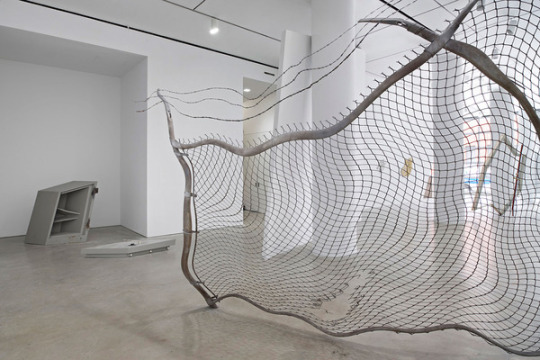
Robert Lazzarini is an American, New York based sculptor and artist who I recently had the chance to interview and learn more about his process and work. I first learned about his work when my friend and artist Dennis Hoekstra assisted Robert’s studio in fabrication of a large distorted Fence piece for a show at Marlborough Gallery. Fell in love with the work and had some fun experiences at Robert’s studio seeing the work first hand, how it was made, and thoughts behind the process.
Tell me about how you got started, the evolution of your work and what you are focused on now?
I first started exhibiting works on paper even though I was primarily making objects. At that point, I was developing what would be a long relationship between the image and the object. For the majority of my career I’ve been focused on the phenomenologic experience of the object/image and thinking about creating new physical experiences for the viewer around the object. For the past several years, I’ve been focusing on just making images. My upcoming exhibition this December at Dittrich Schlechtriem, Berlin will be the first time I’m combining sculptures and paintings in one show.
Could you tell me more about the connection between your three-dimensional sculptural works and the two-dimensional paintings?
Most of my sculptures are experienced based on the viewer physically navigating the works as a way of understanding them. So they challenge some basic tenets of perception. They also complicate the space of pictures and the space of things. In some ways, I’m trying to create a counterpart to that in the paintings. Creating interference between a receding image and projecting graphic patterning moves the viewer around the work as a way for them to understand an image in flux.

What is the process involved in making your paintings?
I start out designing the images in Photoshop based on appropriated imagery. During this process, I print digital proofs until the design and scale are finalized.
The final paintings are silkscreens on prepared canvas over panel. The canvas recto is coated with multiple layers of sandable gesso and sanded to a paper finish. I then work with master silkscreen printers to translate the image in layers onto the canvas. The paintings are multiple hand-pulled silkscreens.
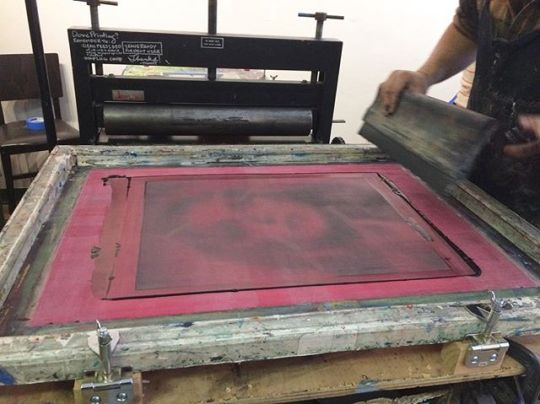
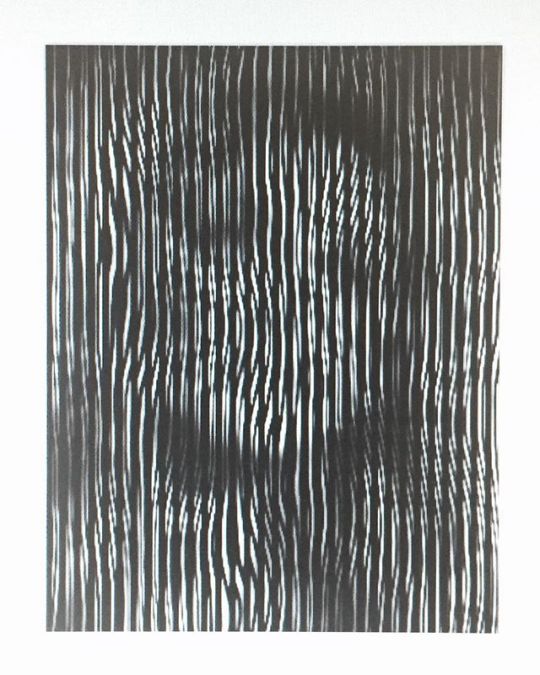
What is the role of distortion in your sculptural works? In these works, the image is never fully resolved for the viewer. I’d like to hear more about your intentions and impulse to create these works.
My work makes use of mathematical distortions not biomorphic ones. The deformity is a relative one where the data of the original object is reconfigured. The main implication being that there is an alteration in the perception of space around the object, thus complicating the viewing experience. The fact that these objects are irresolvable is about creating an object that is a foil to the static nature of historical sculpture. Distortion itself can be seen as a reflection of Art historical tropes, where periodic styles suggest a conflation of observable reality with schema.
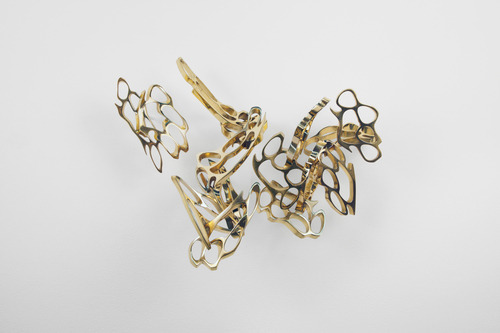
Several of your sculptures (knives, guns, brass knuckles) imply violence. Do you find the role of violence in your sculptural pieces more relevant now than ever?
Not really. It’s something that will always be relevant. Violence is a part of the human condition.
I’m curious about your works in public collections - walk me through one of your favorite pieces in a public collection - how did the acquisition process work?
I guess one of my favorites works in a public collection is payphone in the permanent collection of the Hirshhorn Museum and Sculpture Garden. They acquired it through a partial gift by private collectors. The work was being shown at Deitch Projects’ booth at Basel Miami. Apparently Kanye West wanted to buy it but the deal already went through with the collectors and the museum.
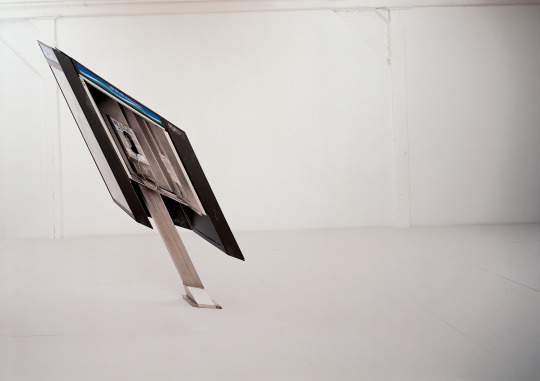
What type of dialogue do you have with other contemporaries - galleries, artists, critics, curators etc? What do you think the role of socializing is in the art world? Is this a critical component for both emerging and established artists? Do you have any advice for emerging artists?
The art world is very social. I think a part of any dynamic practice is to have an ongoing discourse between your work and its prospective audience, which includes galleries, curators, writers and other artists. Some of this happens in your studio but some of this happens socially. Making new relationships and maintaining them is a critical part of being contextualized within the art world. As a general rule, I could give a fuck what critics say.
I’m curious about your new south beach mural. It looks wonderful. Do you enjoy working on large-scale works outside the studio?
Thank you. It’s actually my first outdoor work. It was painted as a part of an Architectural Digest curated show for Art Basel Miami 2015 held at the 1 Hotel South Beach. It seemed like an opportunity to explore scale with some of the formal issues I was working on in my paintings – namely image / pattern relationships. The image of Sharon Tate’s eyes combines with interference patterns. I was able to consider the added overlay of physical objects (small palm trees) in front of sections of the painting. The image conjures a moment in American history when counter culture collides with polite society - the 1969 Tate/ La Bianca murders in Los Angeles. The actress’ eyes tell a cautionary tale. From the quiet luxury of the hotels beach club, they look past the beach beyond the sea, to the shores of new threats to our comforts.
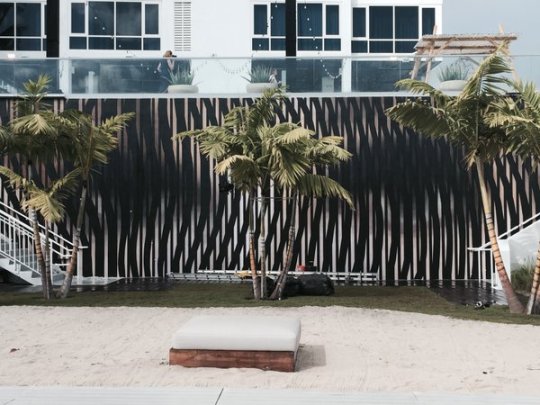
How important are editions in your practice? How important is it to get the work seen by a larger audience and in non-traditional settings.
It’s definitely an opportunity to get the work out in front of a much broader audience. My first edition was teacup for the 2003 Peter Norton Family Christmas Edition. Since then, I’ve done many editions, most notably with Exhibition A, Grey Area, Foliocue and Kayrock Screenprinting.
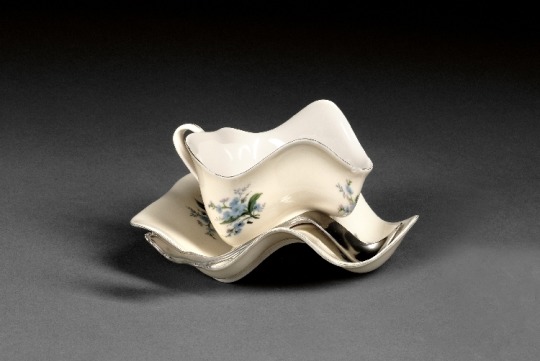
This coming November, for the first time my studio is going to be making a new sculptural edition available directly through my website. Its important for the work that’s coming out of my studio to be available at various price points as a way of fostering collecting.
Please check out robertlazzarini.com for updates.